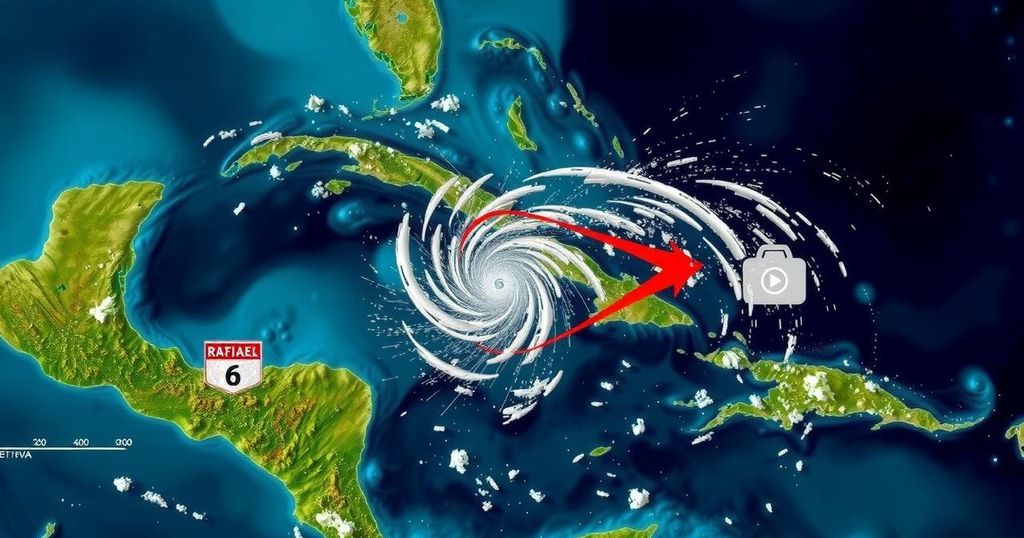Weather
World news
ASIA, CARIBBEAN, CENTER, COLOMBIA, CUBA, DRY TORTUGAS, GULF, GULF OF MEXICO, HAITI, HURRICANE, HURRICANE BERYL, HURRICANE RAFAEL, MEXICO, NATIONAL HURRICANE CENTER, NATURAL DISASTER, NATURAL DISASTERS, NORTH AMERICA, PHILIPPINES, POWER OUTAGES, PUERTO RICO, RAFAEL, SOUTH AMERICA
Sofia Rodriguez
0 Comments
Hurricane Rafael Likely to Weaken as It Crosses Gulf of Mexico after Impacting Cuba
Hurricane Rafael, now a Category 2 storm, is moving slowly west across the Gulf of Mexico, likely weakening due to adverse conditions. The storm has caused significant damage in Cuba, restoring concerns about the nation’s electrical infrastructure. It is anticipated to downgrade to a tropical storm by the time it approaches Mexico, while a potential new disturbance poses low development chances.
Hurricane Rafael, currently classified as a Category 2 storm, is predicted to gradually move westward across the Gulf of Mexico over the forthcoming days. The storm is expected to encounter less favorable conditions than those experienced in the Caribbean, such as significant wind shear, dry air, and cooler waters, which are likely to contribute to its weakening. Forecasters from the National Hurricane Center anticipate that Rafael could downgrade to a tropical storm by the time it approaches Mexico on Sunday. As of the most recent updates, the tropical storm warning for the Dry Tortugas has been lifted, with no additional warnings in effect. However, the storm is still expected to create life-threatening surf and rip current conditions throughout the Gulf region. Rafael made its landfall in western Cuba as a Category 3 hurricane, causing substantial damage including the disruption of the nation’s already compromised electrical grid. This follows a pattern of destructive weather, as earlier in the month Hurricane Oscar impacted the eastern area of the country, leading to eight fatalities and the damaging of approximately 20,000 homes. Meanwhile, meteorologists have reported a decrease in the likelihood of a new tropical disturbance developing north of Puerto Rico and Haiti, with current projections indicating only a 20% chance of it evolving into a tropical depression within the next week. The next name on the Atlantic hurricane list is Sara.
The article discusses Hurricane Rafael, providing insights into its projected path and the conditions it faces as it traverses the Gulf of Mexico. The National Hurricane Center’s forecasts showcase the likelihood of the storm weakening due to adverse environmental factors. Additionally, the impact of Rafael’s recent landfall in Cuba is highlighted, along with the consequences of previous tropical systems on the region. The context of the article situates Rafael within a broader narrative of storm activity in the Caribbean and Gulf of Mexico in October.
In conclusion, Hurricane Rafael is expected to weaken as it progresses west across the Gulf of Mexico due to unfavorable atmospheric conditions. The storm has already caused significant disruption in Cuba, reiterating the region’s vulnerability to severe weather events. As the hurricane approaches Mexico, it is anticipated to downgrade to a tropical storm. Furthermore, forecasters are monitoring the development of a potential new tropical disturbance with currently low chances of formation.
Original Source: www.miamiherald.com




Post Comment